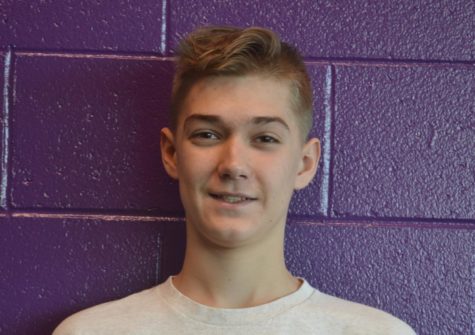America’s deadly normalcy: gun violence, persuasive gun culture
Shootings devastate communities and the people in those communities. Photo courtesy to Canva.
The United States has been plagued by a grim and disturbing phenomenon that has become all too normalized in recent years: mass shootings. Tragically, these acts of violence have become woven into the fabric of American society, occurring with such alarming frequency that they no longer shock us to the core. What are the reasons why mass shootings and the prevailing gun culture have become distressingly normal in the United States?
- Easy Access to Guns
One of the primary factors contributing to the prevalence of mass shootings in America is the ease with which individuals can acquire firearms. The Second Amendment of the U.S. Constitution, often interpreted as an unrestricted right to bear arms, has created a legal environment that enables individuals to possess a wide array of firearms. While the Second Amendment is a deeply ingrained aspect of American culture, the lack of comprehensive background checks and loopholes in gun control laws have allowed dangerous individuals to obtain firearms with minimal scrutiny.
- Inadequate Gun Control Measures
Despite the alarming rise in mass shootings, efforts to implement stricter gun control measures have been met with staunch opposition. The National Rifle Association (NRA) and other pro-gun groups have successfully lobbied against meaningful reforms, arguing that such measures infringe upon individual liberties and the constitutional right to bear arms. Consequently, policies that could potentially prevent firearms from ending up in the wrong hands, such as comprehensive background checks, closing gun show loopholes, and banning assault weapons have been consistently blocked.
- Deep-Rooted Gun Culture
The United States has a unique and deeply rooted gun culture, where firearms are often viewed as symbols of freedom, protection, and self-reliance. This cultural attachment to guns can be traced back to the nation’s history, where firearms played a crucial role in the fight for independence and subsequent westward expansion. Today, this cultural affinity manifests in various ways, from the prevalence of gun ownership for self-defense to the romanticization of guns in popular media. Such a deeply ingrained gun culture makes it challenging to enact significant changes to gun laws and fosters a normalization of guns as a societal norm.
- Copycat Phenomenon and Media Coverage
Mass shootings garner significant media attention, often leading to a troubling copycat phenomenon. The saturation of news coverage, including detailed accounts of the shooters and their motives, inadvertently provides a platform for potential future perpetrators seeking notoriety. This cycle perpetuates the normalization of mass shootings, as individuals contemplating such heinous acts find inspiration in the extensive media coverage given to previous incidents.
- Mental Health Crisis and Societal Fragmentation
The United States grapples with a mental health crisis, exacerbated by limited access to adequate mental healthcare services. The link between mental illness and mass shootings is complex and multifaceted. While the majority of individuals with mental illnesses are non-violent, the absence of comprehensive mental health support systems, coupled with societal fragmentation, can lead to individuals slipping through the cracks and resorting to violence. Addressing the mental health crisis and building a more cohesive society are crucial steps in preventing mass shootings.
- School Shootings: The Nightmare in Our Educational Institutions
School shootings represent one of the most harrowing manifestations of mass shootings in the United States. These tragic incidents not only result in loss of innocent lives but also leave lasting psychological scars on survivors and entire communities. The frequency of school shootings has created an atmosphere of fear and uncertainty within educational institutions, where students and teachers alike must grapple with the grim reality that their schools may become the next target. The normalization of these horrific acts further amplifies the urgency to address the root causes, including gun accessibility, mental health support within schools, and preventative measures to ensure the safety and well-being of students.
Students in schools also have to go through the trauma and fear of lockdown drills and evacuation drills. Along with these drills students must live in fear of a shooting happening at any time. Just last week, here at A-West, students experienced this sense of fear first hand when a false alarm was triggered by mistake at the district level.
In a Q&A with Clark Grose’s advisement class, incoming Principal Micah Porter said, “All I know is that this was triggered by someone at the county level by mistake… if anyone needs someone to talk to, my office is open.”
The possibility of a shooting at any school is incredibly real. 24 years ago, just 30 miles down the road, the first major school shooting took place at Columbine High School. Only 2 months ago, a 17 year old student opened fire at Denver East high school, injuring 2 but killing none. The fear of school shootings is real and something must be done to protect our kids.
- Lessons from Serbia: A Turning Point in Addressing Gun Violence
While the United States struggles to break free from the normalcy of mass shootings, there are lessons to be learned from other nations that have successfully addressed similar challenges. Serbia, for instance, experienced a wave of tragic shootings that shook the nation’s conscience in which 17 people were killed and 21 were injured. In response, Serbia took proactive steps to address the issue head-on. Recognizing the need for change, the citizens turned in their firearms to help prevent further violence. According to the Associated press, “Serbian citizens handed over 6000 unregistered firearms… police also received 300,000 rounds and over 450 explosives.”
This collective action in Serbia serves as a powerful example of a society willing to confront the devastating consequences of gun violence and prioritize the safety and well-being of its citizens. It demonstrates that change is possible when individuals, communities, and policymakers come together with a shared commitment to reducing gun-related tragedies. While each country’s circumstances are unique, examining the successes and lessons learned from other nations can inform the ongoing dialogue around mass shootings and encourage the exploration of innovative solutions. The Serbian example highlights the importance of fostering a culture that values life over the unrestricted access to firearms. It emphasizes the significance of community engagement, responsible gun ownership, and a willingness to reevaluate existing norms and laws.
The normalization of mass shootings, including the devastating phenomenon of school shootings, and the pervasive gun culture in the United States demand our immediate attention and concerted action. These horrific acts have tragically become all too familiar, leaving a trail of shattered lives and communities in their wake. To effectively address this complex issue, we must adopt a comprehensive approach that includes stricter gun control measures, improved access to mental healthcare, responsible media reporting, and targeted measures to safeguard educational institutions from the nightmare of school shootings. We must recognize that the normalization of mass shootings, particularly in schools, creates an environment of fear and uncertainty for students and educators. Ensuring the safety and well-being of our children within educational institutions should be a top priority. By addressing the root causes of these shootings, including the easy access to firearms, promoting mental health support within schools, and implementing preventive measures, we can create a safer and more nurturing learning environment where students can thrive without the constant threat of violence. Breaking the cycle of mass shootings requires a collective societal commitment.
We must challenge the deeply ingrained gun culture and advocate for sensible gun control laws that prioritize public safety while respecting individual rights. Moreover, we need to address the mental health crisis in our country by improving access to quality mental healthcare services and reducing the stigma surrounding mental illness. It is also crucial for the media to exercise responsibility in their coverage of mass shootings, minimizing the potential for a copycat phenomenon while still informing the public about these tragic events. By shining a light on the systemic issues contributing to mass shootings, we can foster a national conversation that drives positive change.
In conclusion, by acknowledging the unique nature of school shootings, acts of gun violence and the devastating impact they have on our communities, we can work towards comprehensive solutions that prioritize the safety and well-being of children and the people of the United States. Only through a collective effort can we hope to break free from the grips of this horrific normalcy and build a future where mass shootings are a thing of the past, creating a safer and more compassionate America for generations to come.

Shane Alley is a sophomore at Arvada West High School. This is his second year with the Westwind. He wants to go into sports journalism and work for ESPN...




Kim Millett • Aug 10, 2023 at 7:28 am
I appreciate the high quality of the writing in this editorial. I would add to the section about gun culture that vehement gun enthusiasm is almost exclusively male and white male. I once asked a man, a “nice guy” in his community and a staunch advocate for the unqualified right for (white males) to own whatever guns they choose, to define “responsible gun owner.” His answer: “a man who cleans his gun.” Father to son passage of guns, rights of passage from the Old Frontier that measure a man’s worth by his willingness to kill, are at the heart of our problems. As a boy, that same man was asked by his father’s friends, “Got your deer yet?” Until he said yes, they had nothing more to say to him.